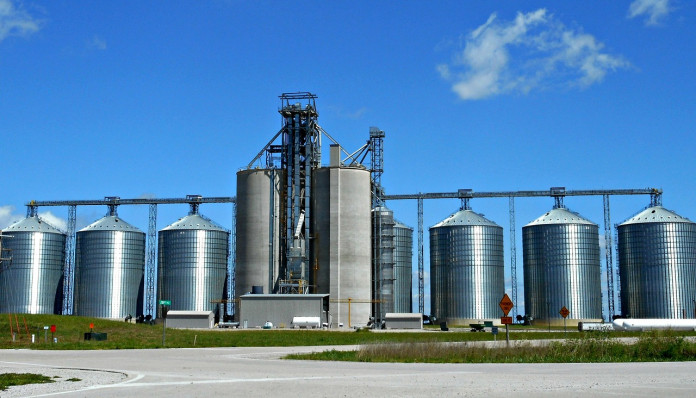I had a dream last night. I was driving around in my 1965 Ford Galaxie, using a stick to measure farmers’ fuel tanks.
The Ford was still tan-colored, so it must have been confused in my mind with the early years after school when I would drive onto farms and check fields for Ohio Seed Improvement Association. It was later that I took off all the badging, filled the holes and painted the car Omaha Orange.
Later in the dream, the car morphed into a cream-tan 1989 Mercury Grand Marquis, my current all-American land yacht. I was still using the stick.
Checking bins
When I woke up, the dream made more sense. I had gone to sleep thinking about the latest U.S. Department of Agriculture report, which was dominated by the idea that we will end the year this year and maybe next with what we call “pipeline supplies” of corn and soybeans.
I guess that was what I was really doing in my sleep — climbing bins and checking the contents as we run out of grain in this country.
We have not actually reached the police-state status in this country where we can go onto farms uninvited and check grain bins. CCC still has the authority to check sealed bins for the contents, but grain prices have been so high for so long that your local ASCS office would likely have to consult a manual to figure out how to process a commodity loan.
I do remember a time 60 years or so ago when my dad came home from a week on his steel-hauling truck to find a demand to appear at a meeting to defend himself for emptying a sealed bin. Turns out they had the wrong bin. I should probably get over this after 60 years, but some grudges are worth hanging onto.
Nowadays, Uncle Sugar sends surveys to selected farmers and asks them, among other things, how much grain they have. They apparently used these surveys and satellite imagery more than the expected weather model to determine the yields in the reports last week.
Making adjustments
The trade was expecting a corn yield of 179.5 bps, but got 174.6. This was closer to the expected actual yield. The game ahead of the report was to estimate the yield and then estimate what USDA would report, two different things. The soybeans came in at 50 bpa, down 0.8 bpa from the previous report.
The lower yield of corn reduced the expected production by 415 million bushels. To counter this, USDA lowered expected exports and feed numbers to come up with a carryout of 1.24 billion bushels for 2022.
The thinking is that, since our carryout is so low, near that “pipeline” level, we will end up adjusting other parts of the marketing to come out with the same carryout number. That is, you can’t export what you don’t have. You can’t feed what you don’t have.
Now, 1.2 billion seems like a lot of bushels. The reality of the pipeline is that there is that much in the bottom of a lot of bins. The feed mill does not totally empty out.
The farmer has a little in the bin that he is carrying to feed to a few beef or sell to the neighboring Amish. Maybe he has 700 bushels left, and PGP will not pick up less than a truckload. Maybe he does not want to run his own truck with a part load to some buyer. Why should he? There is little reason that the grain gets cheaper except in the heart of harvest.
Tight crop?
We may even have a boost in prices after harvest if the yields are less than expected. If you listen to farmers burning up the Northwest Corn Belt, you lean this way.
It is not just the 2022 crop that is expected to be tight. The 2021 crop is finishing the year, at Aug. 31, at an estimated 1.12 billion bushels. One indication that our current supply may be tighter than currently believed is that traders are struggling to load out contracted bushels because they are having trouble sourcing the corn.
That gets us back to the concept of pipeline supply. Add up all the dribs and drabs in a lot of bins, and you come up with maybe 1.1 or 1.2 billion bushels of pipeline supply corn and maybe 160 million bushels of soybeans. That is the amount of beans we now estimate we actually have, with harvest around the corner in the main growing area.
Corn and beans gained modestly last week on the USDA-driven idea that we continue to tighten supplies. So, we have two factors that can help our prices. Our crops may not be as large as expected, and our supplies may be over-estimated at this time.













